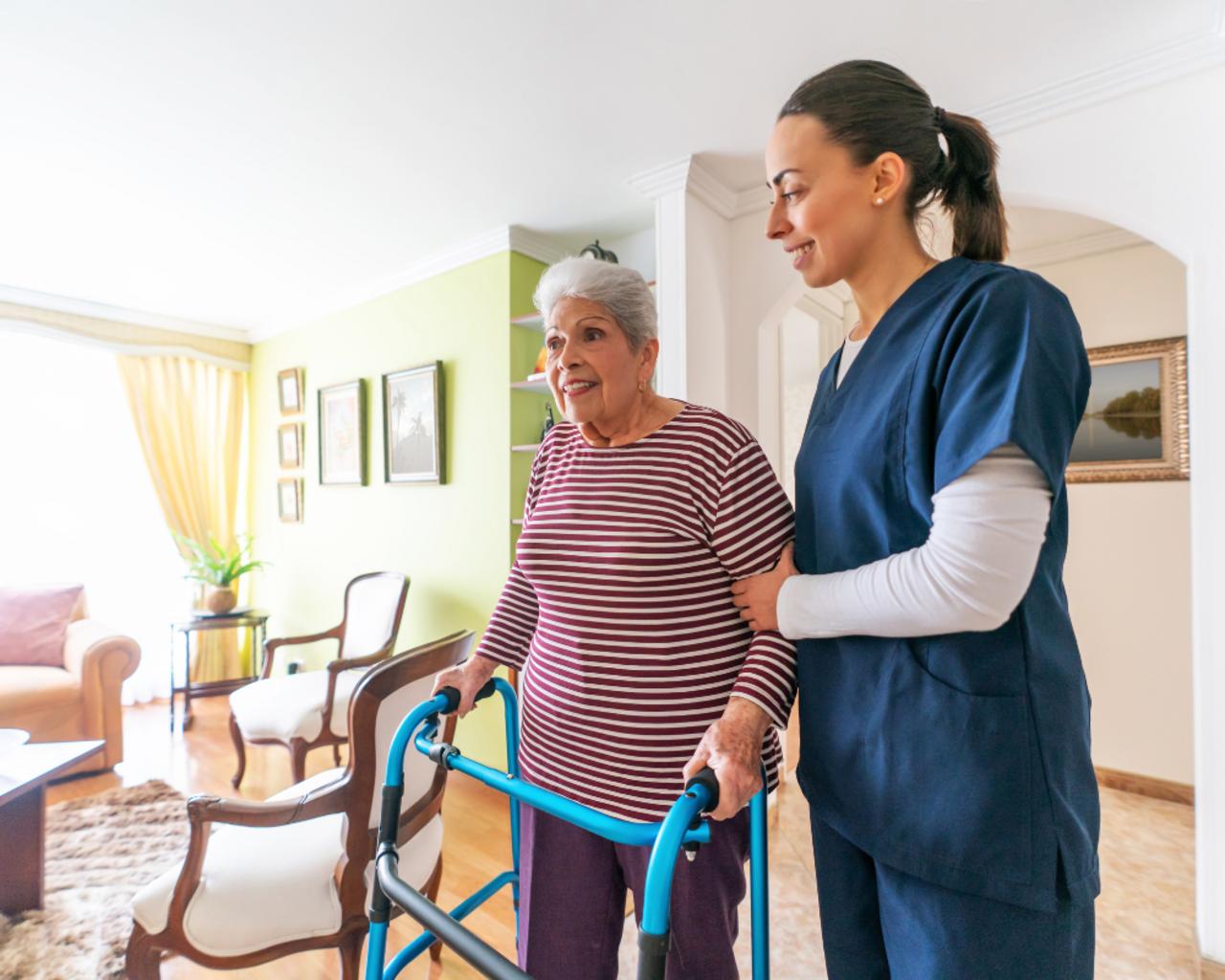Assisted Living•Memory Care•Health and Care Needs•Independent Living
Understanding Levels of Care: Matching Services to Your Loved One's Needs
Assisted Living•Memory Care•Health and Care Needs•Independent Living
Understanding Levels of Care: Matching Services to Your Loved One's Needs
When it comes to senior living, not all care is created equal. From independent living to memory care and hospice, each level of service is designed to meet a specific range of needs. But with so many options available, how do you know which one is the best fit for your loved one?
At Purple Door Finders, we believe that understanding the spectrum of senior care is the key to making confident, informed decisions. In this guide, we break down the primary levels of care, what each includes, and how to assess which one aligns best with your family’s situation.
 Why Knowing the Levels of Care Matters
Why Knowing the Levels of Care Matters
Every senior has unique needs, routines, and health concerns. Choosing the right level of care ensures your loved one receives appropriate support without paying for unnecessary services. It also helps avoid the emotional and logistical strain of repeated moves between communities.
Moreover, many seniors experience evolving needs over time. Some transitions are sudden, such as after a stroke or injury, while others are progressive, like cognitive decline due to Alzheimer’s or mobility loss from Parkinson’s. Understanding these levels now helps families prepare for both expected and unexpected changes.
In many cases, a loved one’s care journey may span multiple types of living situations. For example, a parent diagnosed with early-stage Alzheimer’s might begin in assisted living, transition to memory care as symptoms progress, and eventually receive hospice services. Planning for this potential trajectory can help families choose a community that offers a continuum of care — a range of services under one roof or within the same campus. These transitions tend to be smoother, less disruptive, and emotionally easier for both the resident and their loved ones.
The Main Levels of Senior Living Care
1. Independent Living
Who it’s for: Seniors who are active, self-sufficient, and looking for a maintenance-free lifestyle.
Services typically include:
- Private apartments or homes
- Community amenities like fitness centers, libraries, and dining rooms
- Social and recreational activities
- Housekeeping and meal plans
Does not include: Personal or medical care. Ideal for seniors who want community and convenience without healthcare services.
2. Assisted Living
Who it’s for: Seniors who need help with daily activities but still want independence.
Example: Your father has arthritis that limits his ability to dress and bathe, and he's starting to forget to take his medications. He's still mentally sharp, enjoys socializing, and wants to maintain his independence.
Services typically include:
- Help with activities of daily living (ADLs): bathing, dressing, grooming, mobility, and medication management
- Private or semi-private apartments
- Meals, housekeeping, laundry, and transportation
- Wellness programs and social activities
- On-site staff available 24/7
Does not include: Skilled nursing care. Best for seniors who need support but not intensive medical oversight.
3. Memory Care
Who it’s for: Seniors with Alzheimer’s, dementia, or other cognitive impairments.
Example: Your mother, diagnosed with moderate-stage Alzheimer’s, has started to wander at night and struggles to recognize familiar faces. She needs a safe, structured environment with staff who understand her condition.
Services typically include:
- All features of assisted living
- Specialized staff trained in memory care
- Secured environments to prevent wandering
- Therapeutic activities to promote cognitive function
- Individualized behavioral and emotional support
Memory care communities are highly structured to provide safety and familiarity.
4. Skilled Nursing (Nursing Homes)
Who it’s for: Seniors who require round-the-clock medical care and supervision.
Example: Your dad has had a stroke, resulting in permanent mobility limitations. He now needs help transferring from bed to wheelchair, assistance with all hygiene tasks, and monitoring for his heart condition.
Services typically include:
- Licensed nurses available 24/7
- Management of chronic or complex health conditions
- Physical, occupational, and speech therapy
- Wound care, IV therapy, and post-surgical recovery
- Medication administration and monitoring
Best for individuals with serious health issues or those recovering from surgery, illness, or injury.
5. Hospice Care
Who it’s for: Individuals diagnosed with a terminal illness and a prognosis of six months or less, who are no longer seeking curative treatment.
Example: Your mother’s Parkinson’s has progressed to the point where she can no longer feed herself, communicate clearly, or participate in meaningful activity. Her medical team has recommended focusing on comfort and quality of life.
Services typically include:
- Pain and symptom management
- Emotional, spiritual, and bereavement support
- Assistance with daily care and comfort
- Can be provided at home, in a hospice facility, or within a senior community
Hospice focuses on comfort and dignity during the final stage of life.
How to Determine the Right Fit
Choosing the appropriate level of care involves evaluating both current needs and potential future changes. Consider the following:
1. Daily Functioning
Can your loved one dress, bathe, cook, and manage medications independently?
2. Health Conditions
Do they have chronic conditions, recent hospitalizations, or complex medical needs?
3. Cognitive Health
Is memory loss, confusion, or dementia affecting safety or daily life?
4. Social Needs
Would they benefit from increased social interaction and community activities?
5. Support System
What is the availability and capacity of family or external caregivers?
6. Expected Progression
Are there known conditions (like Alzheimer’s or Parkinson’s) that will require different care levels in the future? If so, consider a community offering a continuum of care to minimize future disruptions.
How Purple Door Finders Can Help
At Purple Door Finders, our mission is to demystify the senior living journey. Our Senior Living Counselors provide unbiased guidance and support as you navigate your options.
We help you:
- Understand the differences between levels of care
- Assess your loved one’s needs holistically
- Use our platform to search and compare communities
- Ask the right questions during tours and consultations
- Connect with trusted local referral agents if desired
We don’t sell you on a particular community or earn commissions—we educate and empower you.
Final Thoughts
Understanding the levels of care in senior living is the foundation of a successful transition. By matching your loved one’s needs with the right services, you create an environment where they can thrive with dignity, safety, and joy.
If you're ready to begin your search or need help evaluating your current options, reach out to a Purple Door Finders Senior Living Counselor today. We're here to guide you every step of the way.
FAQ
What is the difference between residential care and assisted living?
An assisted living community offers care and assistance with the "Activities of Daily Living" (ADL's) and is licensed by their state as a "Residential Care Facility for the Elderly" (RCFE). A residential care community typically has fewer than 20 residents and is often located in a suburban private home. This type of community name varies state by state. For example, they are called "Board and Care Homes in California." A residential care community may also offer care and assistance with ADL's as long as they have an RCFE license with their state.
What is the difference between assisted living and senior living?
Senior Living is a community designed for older adults. The primary focus of senior living communities is to enhance the social needs of an independent resident. Communities that offer assisted living support those residents who need assistance with ADL's. Both types of communities encourage and allow residents to live as independently as possible.
What is the difference between assisted living and continuing care?
Continuing care means the resident can stay in one place to age. The resident does not need to move to another community as health care needs change or increase. Assisted living is one component of continuing care. However, continuing care communities or facilities offer a higher level of care than assisted living.



